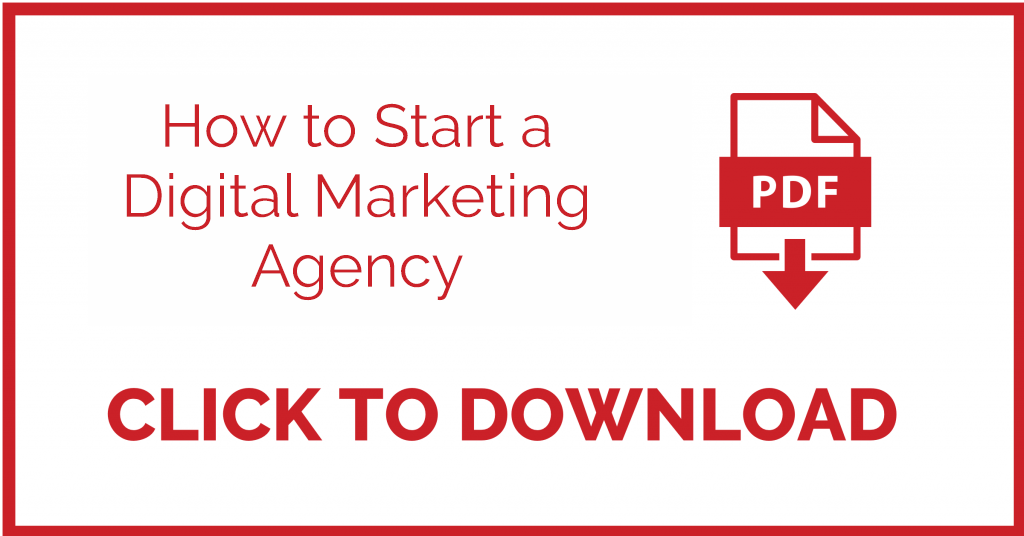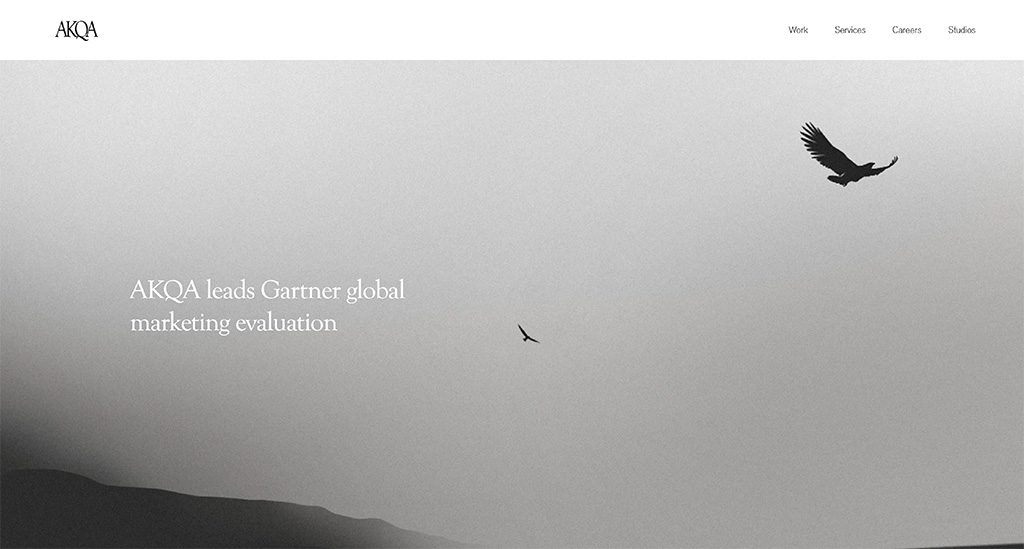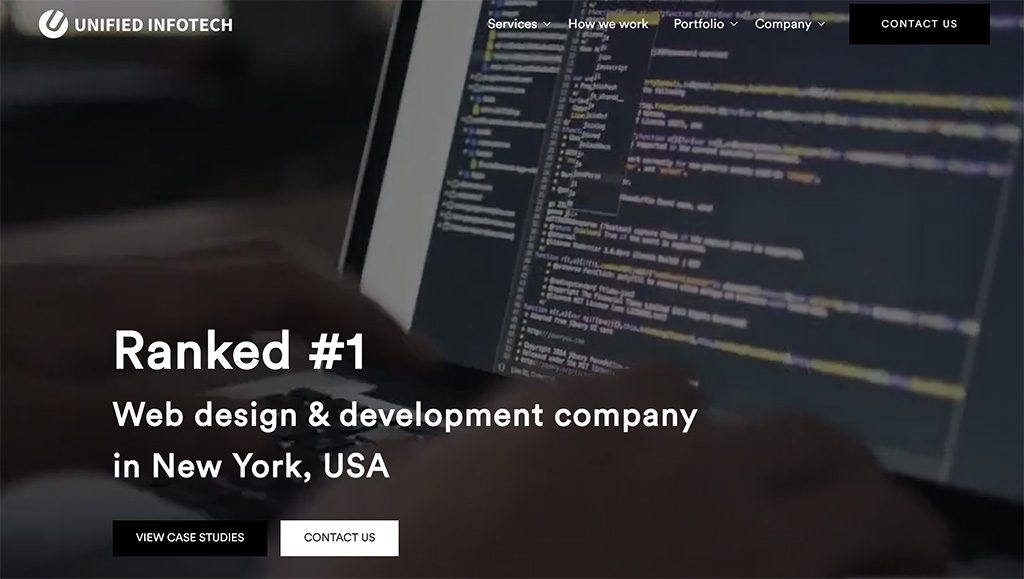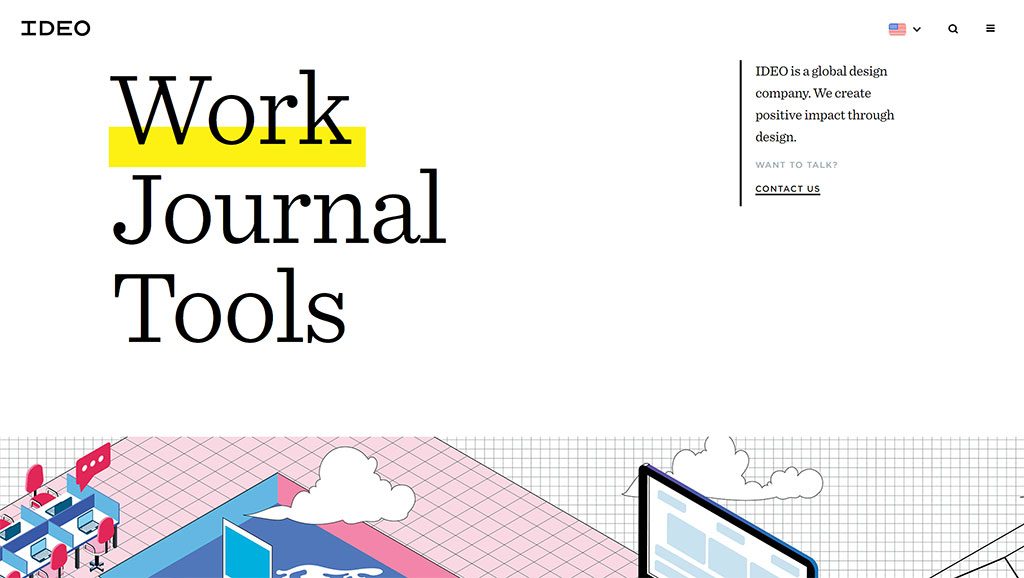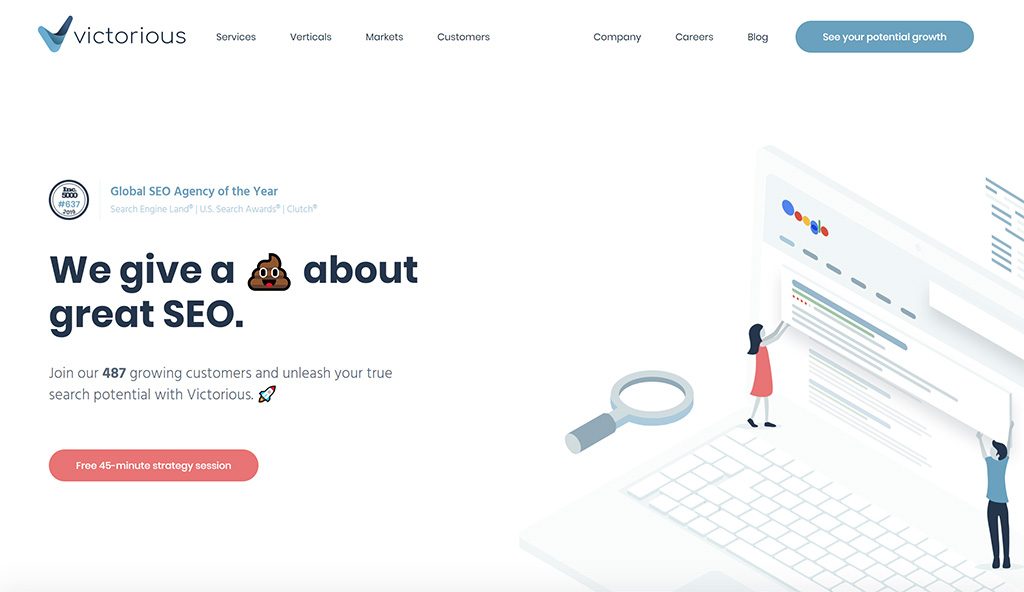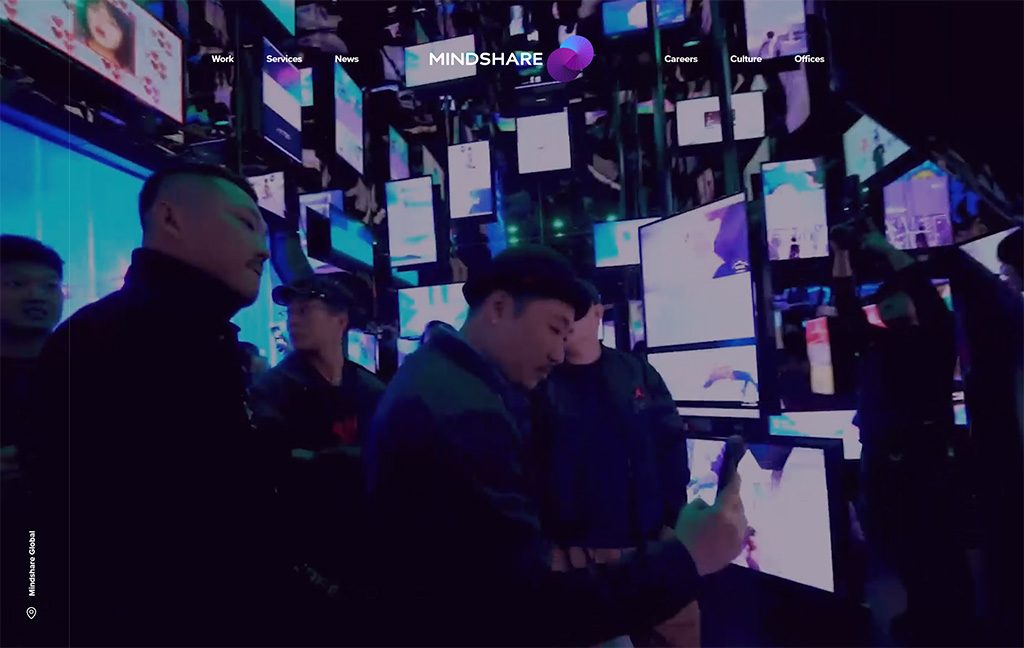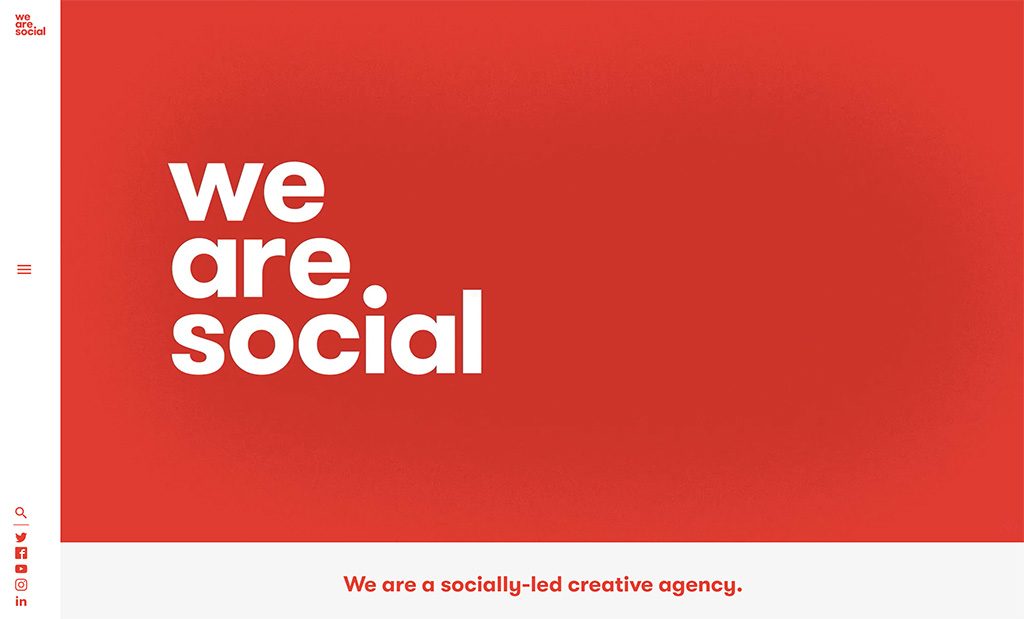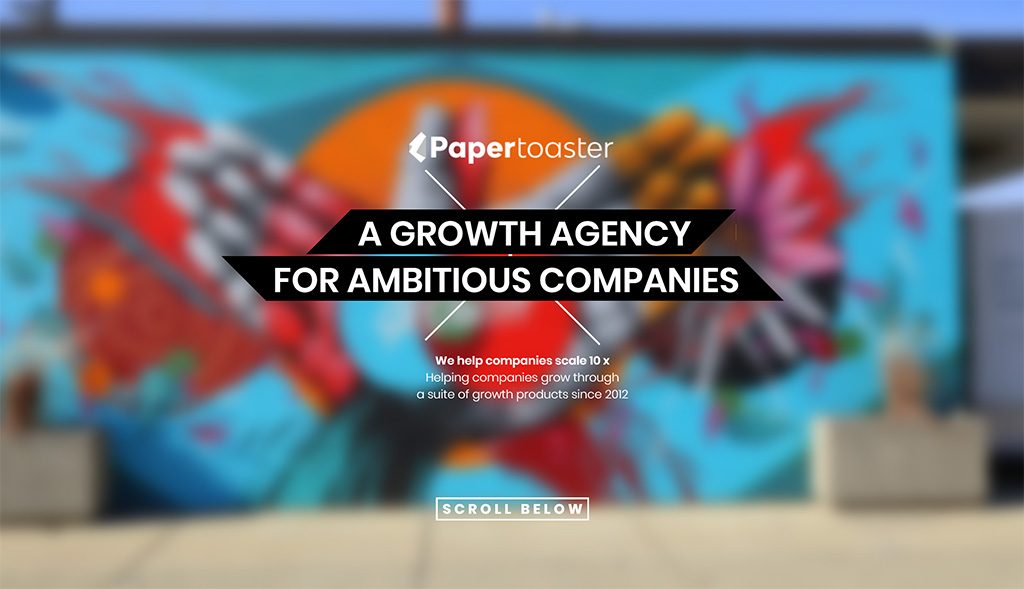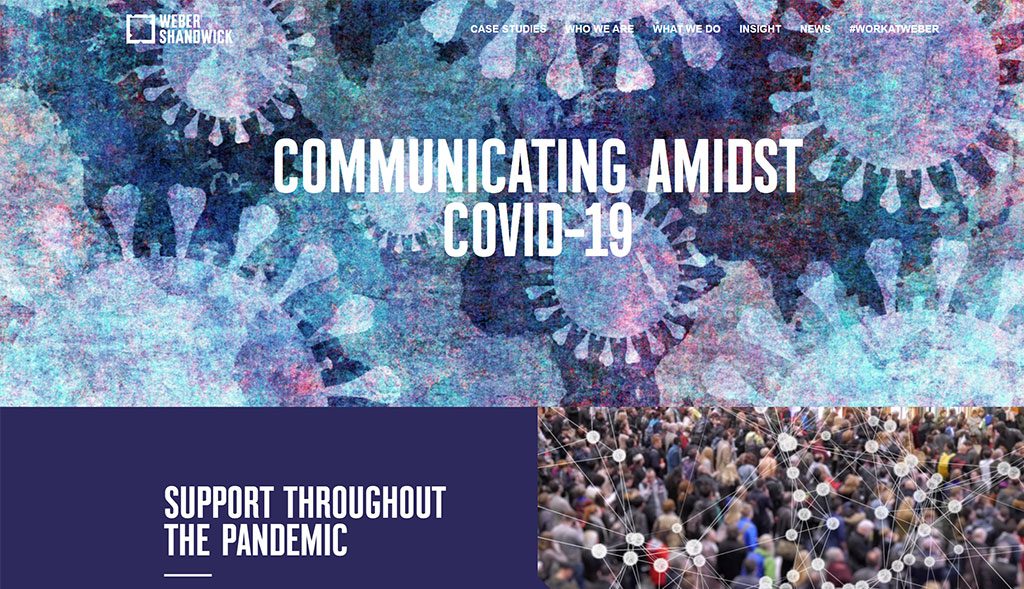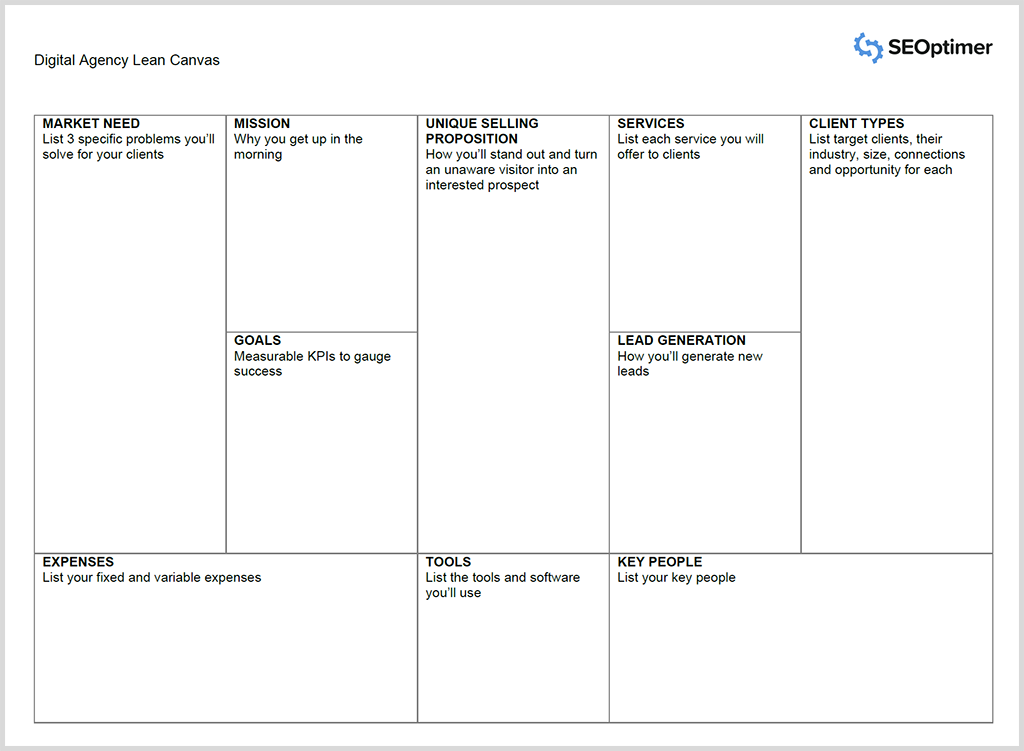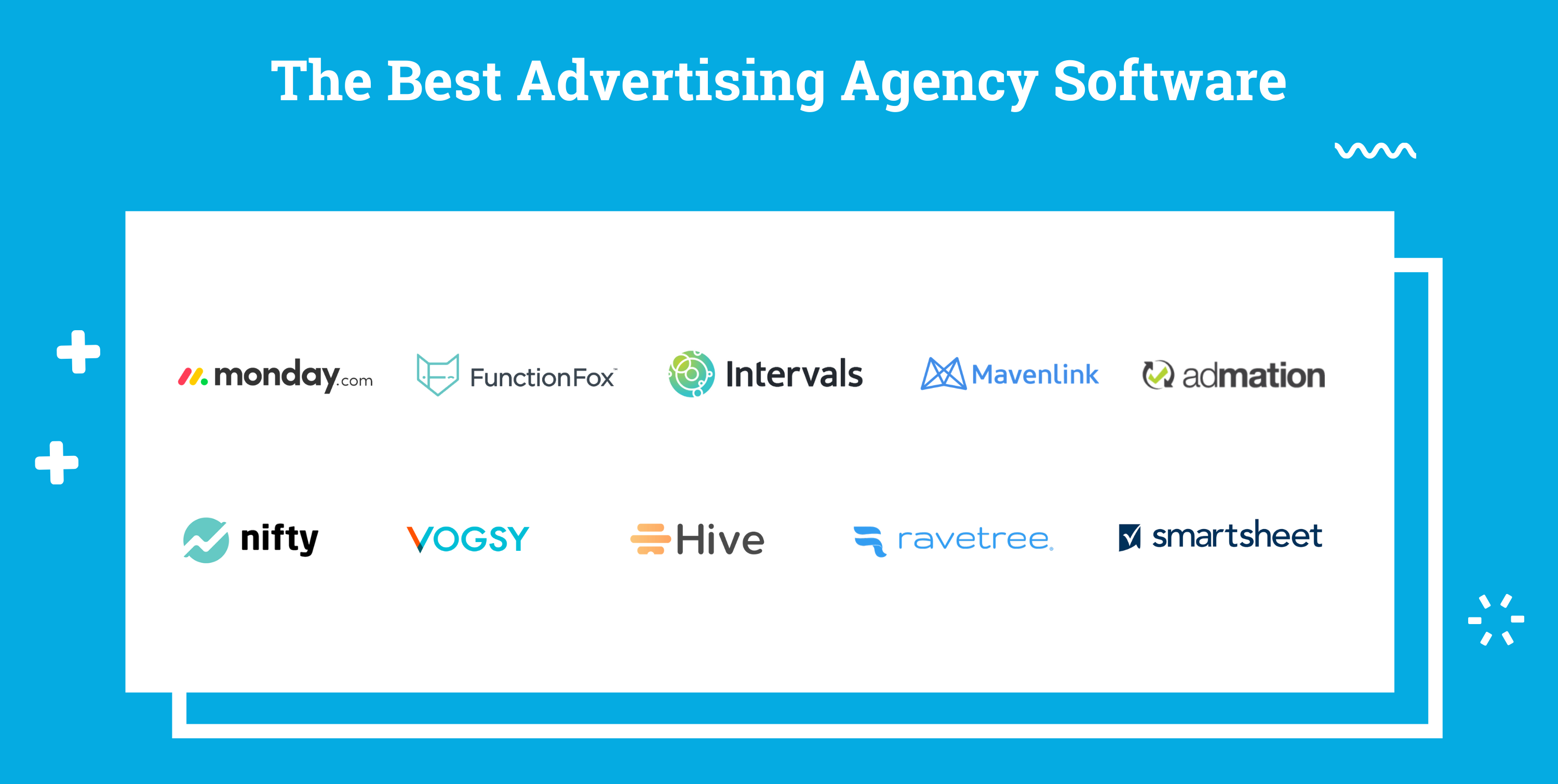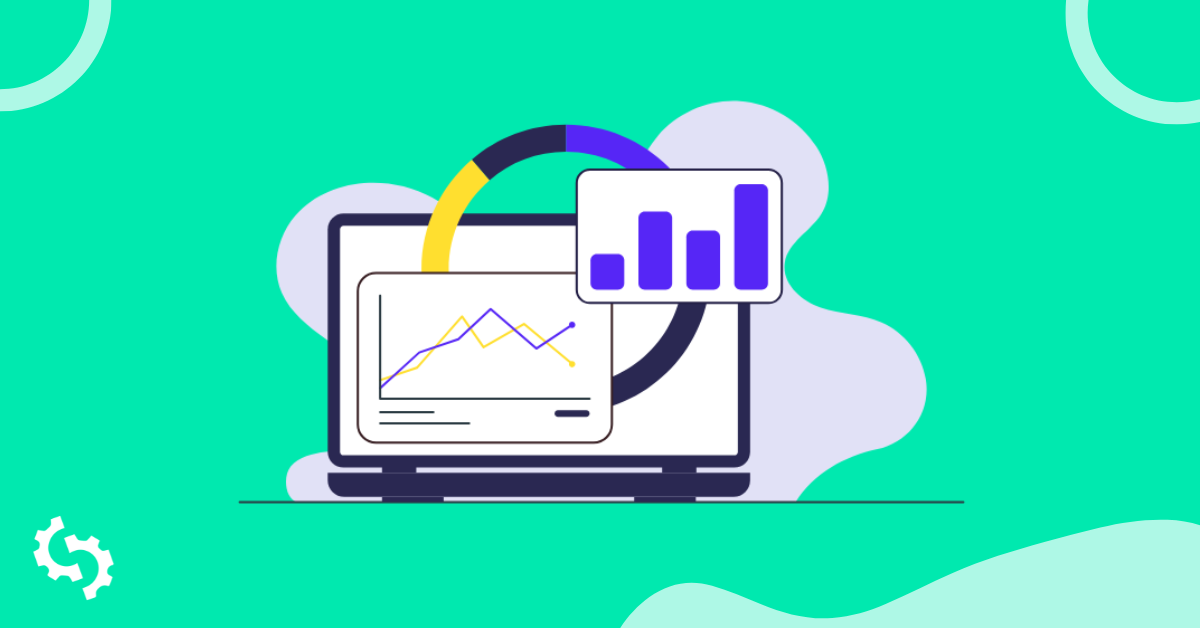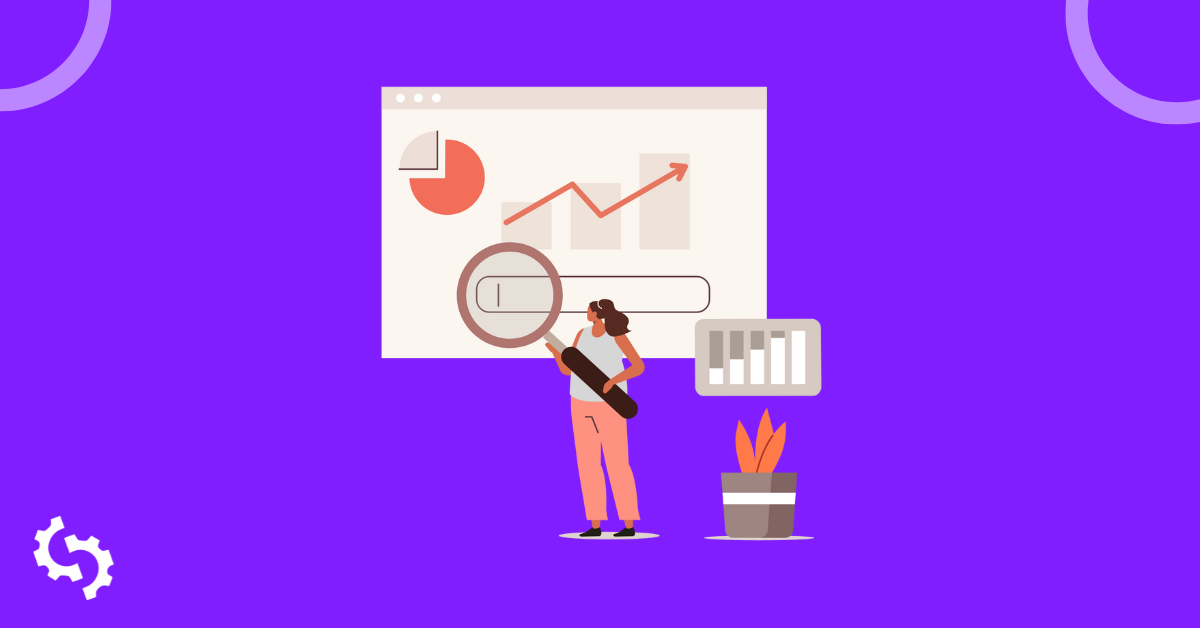
Starting a digital marketing agency is one of the most rewarding and exciting business ventures you can embark on.
But its also highly competitive. According to Clutch.co, there are over 16,000 digital agencies in the US alone.
While it may sound like a crowded market there are actually great opportunities for new agencies focused on delivering new thinking within niche areas under the broad umbrella of "digital marketing".
According to Clutch.co, there are over 19,000 digital agencies in the US alone.
The broad definition of digital marketing is the use of digital channels such as websites, mobile, search, display, social media, email and any other digital channels to promote products and services.
While those channels are the main ones, there is a longtail of channels that fit within the "other" category including PR, influencer, affiliate, podcasts, ebooks, games, SMS/MMS and more. For further reading check out the Top 10 Types of Digital Marketing.
With over 1,500 digital agency customers, SEOptimer is in a unique place to analyze the digital agency industry.
Our team also has experience working agency-side and understand the complexities in running an agency.
In this guide, we'll cover some common considerations you need to take in to account when learning about how to start a digital marketing agency.
How to Start a Digital Marketing Agency-Quick Guide
- Choose what type of digtial marketing agency you'd like to start.
- Develop your business model.
- Establish your key personnel requirements.
- Set your agency goals.
- Upskill where needed.
- Establish your operational costs.
- Find clients and win contracts.
- Manage your agency.
- Manage your agency employees.
What is a Digital Marketing Agency and What Do They do?
The definition of a digital agency is a company that provides creative, strategic and technical development of screen-based product and services to clients.
Andrew Bailey, CEO of The&Partnership describes an agency as "a group of excellent people collaborating around a difficult challenge and finding solutions that drive the clients' business".
The main reason they exist is that most clients lack the resources to execute digital marketing themselves. Because the potential remit of digital agencies is wide, there are many specialized skills that clients can tap into without the need to employ all these specialists in-house.
While there is a recent trend for brands to move more marketing functions in-house, there will always be a role for agencies to pick up work where clients simply don't have the resources or capabilities.
Andrew Bailey, describes an agency as "a group of excellent people collaborating around a difficult challenge and finding solutions that drive the clients' business".
Most agency founders freelance or consult with clients before actually forming an agency. Our previous guide outlines what its like to work as a digital marketing freelancer.
This is a very common pathway and provides a great preview of working directly with clients. Freelancers who accumulate a large workload may find themselves organically morphing into an agency once they start hiring other freelancers to help them.
Work-wise there's not many differences in the output working as a freelancer or as a small agency founder. The real differences come in when the business starts to scale and as you hire more people. Some things remain the same.
The standard way a client works with an agency at the start of the relationship is to run a thorough onboarding process. This is the first step toward achieving the best agency-client collaboration.
The onboarding process ensures that both agency and client are clear on business goals, roles and responsibilities, target audience, comms expectations, deliverables, timings, overall strategy and reporting. B2B agency, New Breed Marketing have put their onboarding process online:
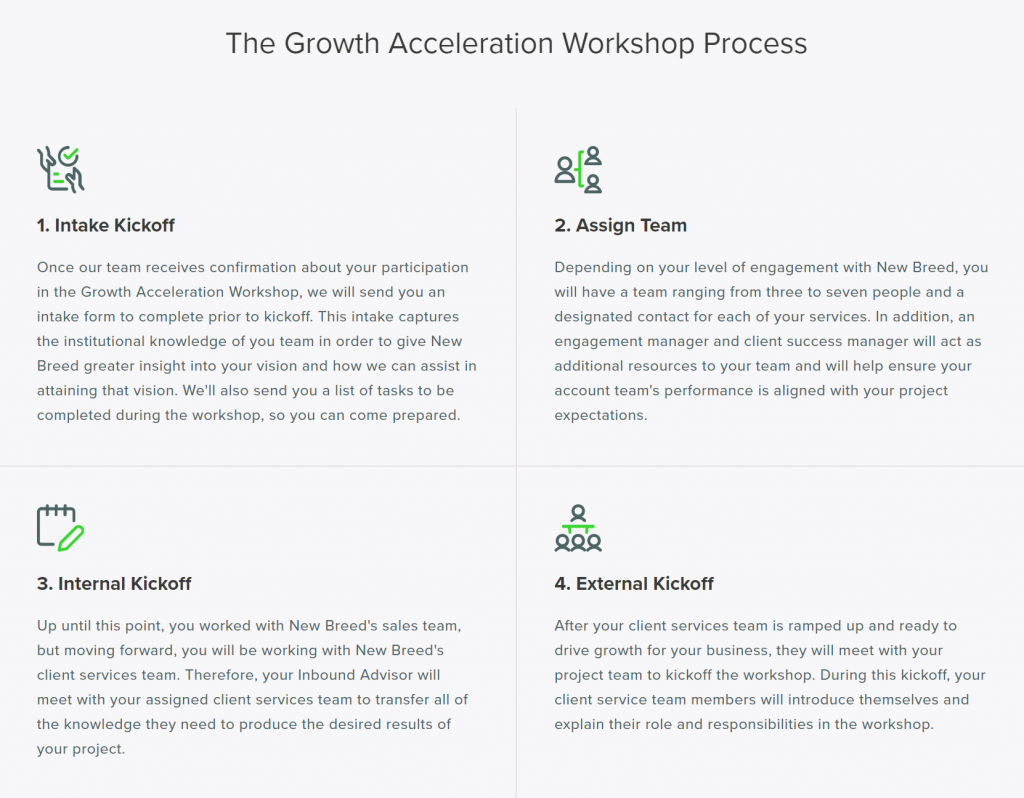
After onboarding is complete, its time to actually get started on the work. This is almost always driven by the brief which is a business document that outlines the business problem the client wants to solve.
The agency then responds to the brief usually with multiple ideas potentially at different levels of budget, complexity, etc. The brief is the north-star and every decision made about the work needs to help drive the business objective outlined in the brief.
Once it's decided what the work involves, more people potentially get involved (both agency-side and client-side) whether that be moving pixels around to create digital assets, writing content, booking ads, cutting code or shooting video - all these people start spending time working on the work.
There are usually rounds of review which enable the client to provide feedback on the work until its delivered or the project is complete.
How do Digital Agencies Make Money?
Darren Woolley, CEO and Founder at TrinityP3 suggests there are three major business models of digital agencies. Some utilize just 1 model however most utilize a mix depending on client budgets and expectations:
- Project Fees: this is the most common model where the project fee is determined based on an hourly or day rate for individual pieces of work. Over the last few years, this model has become the norm.
- Retainers: typically this is a monthly fee broken down into billable hours of certain members of the agency (based on the agency's rate card) plus overheads and profit margin. This model was the most common in the 2000's but crunched budgets and brands pulling more work in house has led to less retained clients.
- Commission: a percentage (typically 10% and upward) charged on top of third party charges such as paid media or production. This can also be a revenue-based commission charged by performance agencies who take a cut of sales.
In 2019, Credo surveyed 271 agency founders around the world to find the average hourly rate of digital marketing consultants and agencies. They found that the worldwide average hourly rate was $148.13.
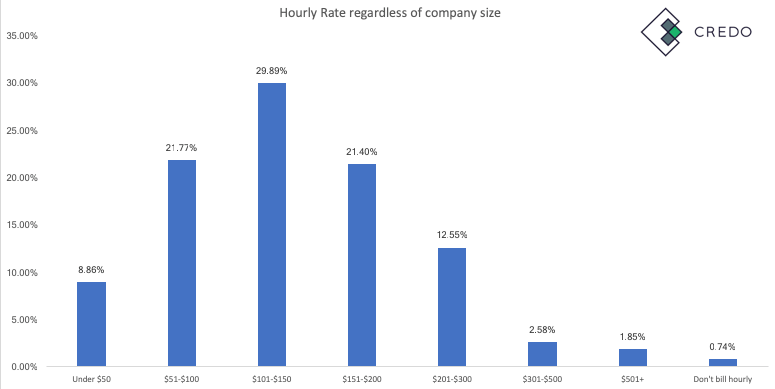
source: Credo
Nearly a third of all agencies charge somewhere between $101-$150 per hour on average. However, there's a lot of detail hiding in that average such as country, agency type and agency size.
By doing a quick country split, between the United States and the United Kingdom we can see an interesting difference:
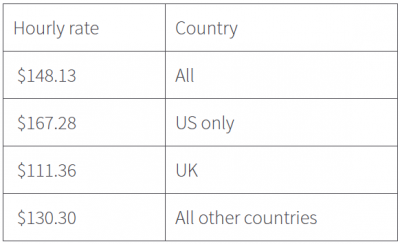
source: Credo
US digital agencies charge an average of $56 more than their UK counterparts. Even "all other countries" charge an average of $19 more than UK agencies too.
Perhaps this can be explained by greater competition in the UK or perhaps the current economic climate and tighter client budgets.
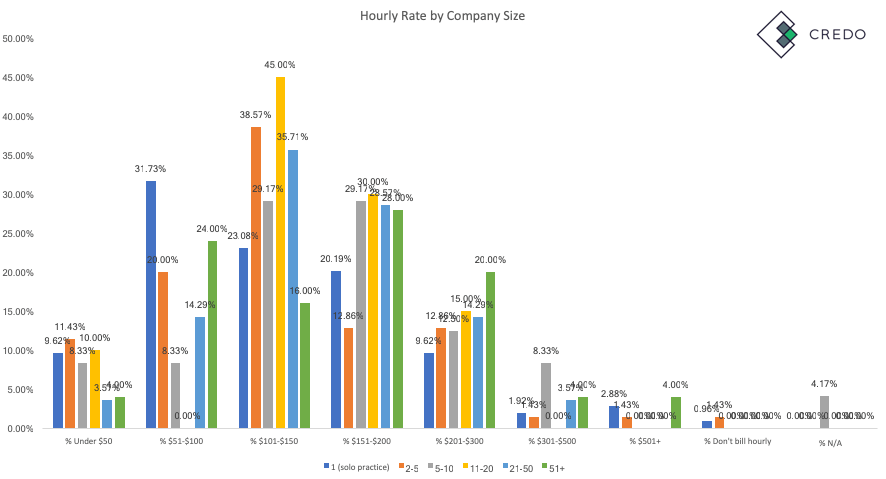
source: Credo
When looking at the hourly rate data by company size, we can see a fairly evident correlation between agency size and hourly rate. The bigger the agency, the higher the rate.
How Much Money do Digital Agencies Make?
This really comes down to the type of business model (as above) and what kind of clients you're targeting.
In terms of monthly retainers Zachary Chastain, Senior Digital Strategist at FUEL for Brands says when working for small businesses retainers can be pretty low: $2,000 - $4,000 per month.
He does say though that most small businesses only opt for project work. This will mean you'll need a steady stream of projects coming in and at least one person focused purely on selling.
For SMBs and smaller corporations, these can be worth up to $10,000 per month but are harder to land especially when you're starting out.
For large agencies hunting big brands, these retainers can start at $15,000 per month and go up from there.
What Kind of Digital Agency Should You Start?
If you visit any digital agency website, there will likely be a "Services" tab in the main menu which broadly outlines what services the agency can deliver.
The absence of services here is important to note because most agencies can't execute all aspects of digital marketing - there's just too much for most agencies to do.
In creating your own agency, you need to play to your strengths. Most agency founders have worked their way up through other agencies or freelanced for several years gaining invaluable experience, industry knowledge and built connections with peers and clients.
Importantly they've seen what has worked and what hasn't worked in other agency environments. Maybe they've seen opportunities by observing client problems or challenges and perhaps witnessed shortcomings in agencies to tackle these problems directly.
This has likely contributed to the rise in smaller agencies focusing on niche marketing disciplines or targeting specific industries. They can outmanoeuvre larger agencies because of their focus and ability to hire specialists within focus areas.
Most digital agencies categorize themselves under one of the following categories below. This is mostly useful to clients when they are searching for agency partners:
Full-Service Agencies
Larger digital agencies tout themselves as "full-service". This means they can literally execute any digital marketing activity no matter what the client brief is.
If these agencies don't have the people necessary to execute work on-hand they immediately hire specialists or plug talent gaps with freelancers.
By saying 'yes' to every brief they're able to charge a premium for this flexibility. AKQA is a prolific full-service digital agency headquartered in San Francisco with 2,200 staff globally across 29 locations around the world:
Website App Development Agencies
These agencies specialize in the design, build, deployment and ongoing maintenance of websites and mobile apps. This is a highly competitive field with a diverse composition of agencies.
On the low end, these can be freelancers / sole traders who do everything themselves or large development shops who hire hundreds of specialists and work on big-budget projects.
And then there's everything in between. Unified Infotech is a leading development agency in New York who have delivered over 1,500 digital projects:
Branding / Creative Design Agencies
Branding and creative agencies focus on the way a brand looks, feels, behaves and communicates. These agencies typically deliver brand guidelines documents and also visual assets which serve as a definitive reference on how any client work should look and feel.
When clients work with multiple agencies to perform different projects, branding agencies are usually engaged first to define the brand guidelines.
They are sometimes referred to as the "brand custodians" or the "lead agency" when a client works with multiple agencies. Ideo is a highly respected design consultancy founded in Palo Alto, with over 700 people in offices around the world:
Search / SEO Agencies
SEO agencies are tasked with optimizing their clients' organic search engine rankings.
It goes without saying, SEO agencies rely on tools like SEOptimer every day! Victorious are a leading SEO agency in San Francisco who won Search Engine Land's Global SEO Agency of the Year:
Media Agencies
Media agencies are also referred to as PPC (Pay Per Click) agencies and focus on booking paid media (ads).
Depending on the agency, sometimes they can deliver the creative that sits in the ad otherwise they typically are responsible for running the ad campaign which involves research to uncover the best channels to reach the target audience, putting together media plans, booking the ads (also known as trafficking), setting up targeting, running ongoing optimization and reporting.
Digital media agencies can book ads anywhere such as:
- Search ads like Google Ads and Bing Ads - also known as SEM (Search Engine Marketing)
- Social media ads like Facebook Ads, LinkedIn Ads, Twitter Ads, etc
- Display ads - also known as banner ads which appear all around the web (this can also be referred to as Programmatic ads when multiple ad exchanges are utilized)
- Native ads - also known as Discovery ads which are advertorial content pieces usually seen on news sites
- Any other digital advertising methods like affiliate advertising, ads on digital panels or other closed ad buying platforms also referred to as DSPs (Demand Side Platforms)
Mindshare is a global media agency based in New York and part of the massive GroupM network:
Social Media Agencies
Social media agencies deliver strategy, content, community management and optimization across social media channels like Facebook, Instagram, LinkedIn, Twitter, Snapchat and YouTube.
This can include emerging channels like TikTok and Byte. Social media agencies usually deliver both organic and paid work which can potentially cause overlaps if clients work with media agencies too. We Are Social is a leading global social media agency headquartered in London:
Performance and CRO Agencies
Performance or CRO (Conversion Rate Optimization) agencies are usually discipline-agnostic meaning they utilize any parts of digital marketing to increase ROI based on client business objectives.
This usually means a mix of search and social leaning heavily on paid media but it can literally include any activity on any digital channel with the sole purpose of driving marketing performance.
Papertoaster is a renowned performance agency based in Singapore who have productized their offering into growth products:
PR Comms Agencies
PR (Public Relations) agencies focus on promoting clients products and services in the press - usually mainstream news publications and other high-traffic properties.
They maintain close relationships with journalists, writers and editors and continually pitch story ideas with the aim of crafting them in such a way that they receive editorial interest.
Their success is judged by how many "hits" (ie mentions) they can generate for their clients.
Some comms agencies specialize in internal comms (for large corporations) or corporate comms too. Weber Shandwick is global PR and communications agency with a heritage in the Asia Pacific region:
Content Marketing / Inbound Agencies
Content agencies, also known as inbound agencies, focus on creating content. They are storytellers at heart and craft the best written, visual and audio content to engage customers and drive sales.
The term inbound relates to inbound marketing where customers seek out a brand usually as a result of content they have consumed as opposed to outbound marketing which is where the customer is interrupted with ads or a sales pitch.
256 Content is a leading content agency in Dublin, winners of Content Marketing Institute's Agency of the Year Award:
Then there are a few other niche agency types such as:
Influencer Marketing Agencies - these agencies behave like a traditional talent agency except they represent influencers!
Clients work with these agencies by briefing them about their project objectives, target audience and budget.
The agency then searches their roster of influencers on Instagram, YouTube, Snapchat, TikTok, etc and recommends talent from their network. They then work with the influencer to create content and are the conduit between the influencer(s) and the client.
Community Management Agencies - these specialist agencies focus on community management on social media.
This includes comment moderation, upholding the discussion policy, replying to questions and generally fulfilling a customer service role. They can triage customer service requests through to experts on the brand side or deal with requests directly.
These agencies are popular for higher-risk clients like Government, alcohol brands, finance brands, etc who need 24/7 community management.
They typically take over social accounts outside of business hours starting at 5pm and managing them through until 9am the next morning when the client takes over during their work day.
Industry-focused Agencies - some agencies deliver multiple services above but do so within a particular category or vertical.
For example, a digital agency that works exclusively with real estate agents or law firms or fashion brands - you name it! If you do a quick search you'll likely find agencies that exist in most categories.
Their big advantage over other agencies is that they have in-depth category knowledge and usually have extensive experience within that category.
B2B Agencies - B2B agencies work purely for business to business clients. In other words, clients who sell to other businesses.
These agencies use LinkedIn heavily and rely on known B2B lead generation tactics like content marketing / inbound marketing and event marketing.
B2G Agencies - B2G agencies work purely for business to Government clients. In other words, clients who sell to Governments.
These agencies rely on relationships developed in Government and help guide their clients through Government procurement processes, tendering and applying on service panels.
Kyle Rachi, CEO at Proposify says:
"Too many design and marketing agencies have no clear value proposition beyond 'we do good work' and they don't target any particular industry or serve a vertical market, believing they should work for any business that wants to hire them.
Don't make that mistake.
The way to get good clients who pay top rates is to target a specific niche so that you don't have to compete as a generalist".
Developing Your Digital Agency Business Model
You may have heard of the Lean Canvas which seeks to replace the often bloated business plan document with a single page business model using 9 building blocks.
We've taken inspiration from this tool and developed the Digital Agency Lean Canvas as a way to brainstorm, plan and communicate how your new digital agency will operate.
For more information and an example agency walkthrough, check out our full guide and template: Digital Agency Lean Canvas Example (with PDF).
Key Agency Personnel
At the start there's the founder or founding team - these are the easy days (although there's no such thing as an easy day in agency land).
While key personnel is dependant on the type of agency you start, there are certain critical functions needed in all agencies.
Sometimes one person fulfils multiple functions but as you grow you will likely need dedicated personnel at each function.
The more headcount you add, the more complex the agency becomes. Growth is good but it also has its own unique set of challenges. These critical functions include:
CEO / Managing Director - the agency leader who sets the agenda, manages the business and attracts talent & clients.
New Business - someone to drive lead generation, expansion of existing clients, preparing pitches & proposals and maintaining a sufficient pipeline of new clients.
Account Management - someone to own the client relationship, be the primary interface between agency staff and the client team, manage client expectations and deliver what they want on time and on budget.
Strategy / Planning - someone to own strategy of the work, how it fits into the client's broader business and how it delivers the intended goals and KPIs.
Production - practitioners who execute the work whether this be designing, building, coding, writing, shooting, editing or any other technical craft.
Goal Setting
In starting any new venture its fundamental to set goals. One of the most cited goal-setting models is SMART:
- Specific: goals must be crystal clear and objective. A great specific goal is "Grow the agency to 6 clients with monthly revenue of $50,000."
- Measurable: you must be able to answer the question "how will I know when I've achieved it?"
- Aspirational: add at least 20% more additional to your targets - think of this as enabling a stretch goal. You'll achieve your goals faster with this mentality.
- Realistic: know your potential and what's realistic in your market.
- Time-bound: focus on specific time frames for the short, medium and long term.
Some great examples of agency goals include:
- Grow to 10 retained clients by the end of the year
- Increase monthly revenue 15% by the end of next quarter
- Upsell at least 2 current clients on new services by the end of the month
- Double the amount of inbound new business leads in 90 days
Upskilling
Upskilling yourself and your staff is vital especially in the digital marketing industry because technology is evolving constantly and there are always new things to learn.
As Davida Shensky says "You need to get good at what you’re going to be offering as professional services. Put in the work at a 9–5 before striking out on your own. You can’t sell yourself as a digital marketing expert without being a digital marketing expert."
Some agencies have a training or professional development budget which employees receive each year to spend on courses, conferences, mentors and other learning pursuits.
This is not only great for the individual but excellent for the agency as the staff bring back these learnings and apply them directly in their roles.
Speaker and consultant, Lilach Bullock recommends agencies implement PDPs (Personal Development Plans) for their employees that set out what skills gap each employee wants to address and how they'll address it.
Putting employees in charge of their own skills development is advantageous and also makes them accountable for what they learn.
Post-learning, employees need to be able to apply their new skills - this may mean the need for new tools or software to put theory into practice. Staff should also be tasked with educating others in the agency through presentations or lunch and learns.
As David Shensky says "You need to get good at what you’re going to be offering as professional services. Put in the work at a 9–5 before striking out on your own. You can’t sell yourself as a digital marketing expert without being a digital marketing expert."
Typical Operational Costs
Starting an agency doesn't need to cost much at all. Since there is very little capital expenditure upfront needed, the barrier to entry is low. As you grow, your biggest expense will be people whether they be on payroll or freelance.
After staff costs, the next big-ticket items include:
- office rent
- business costs such as accounting / legals / insurance / registration
- operational costs such as utilities, office equipment and consumables
- software subscriptions, web hosting and licensing fees
Breaking down software costs further, DPM published a useful guide of popular software used by agencies:
Some highlights in DPM's guide include FunctionFox a project management tool built by an agency for agencies, Mavenlink for tracking operational and financial performance and VOGSY for comms automation within G Suite.
These software tools start from just $5 per month and go up to $19 per month.
Australian digital agency IGNITE wrote about their tech stack which includes:
- Adobe Creative Suite - industry-standard design suite - $52.99 per month
- Asana - project management - $13.49 per user per month
- BrowserStack - browser testing - $12.50 per month
- Cloudflare - Content Delivery Network (CDN) - $5 per month
- Figma - wireframe and prototyping tool - $12 per user per month
- Fullstory - in-depth website analytics - POA
- G Suite - Gmail, Analytics and Ads - $8.40 per user per month
- Pandadoc - proposals and quotes management - $9 per user per month
- Pingdom - server uptime monitoring - $13.95 per month
- Rocket Validator - code validation - $72 per month
- SEOptimer - website audits - $19 per month
- Slack - internal communication - $8 per user per month
- Suitcase Fusion - font management & library - $119.95 one-off purchase
- UserTesting - user testing software - POA
- Vaultpress - website backups and security - $39 per year
Most tools above come with free plans and/or free trials too!
Finding Clients and Winning Work
Most agency founders have an existing network that they use to gain their first clients. Some even leave agencies and take clients with them who become foundation clients at a new agency.
If you're starting from scratch though, you will need a strong point of difference in market and a way to communicate how you're different and better to the other agencies you compete with.
"We put up a sign saying 'UX design agency' to advertise our services. We held whiskey tastings at our desks to explain what we did. When people came to chat, we got to know all the different startups in the building and boom! That's how we got our first clients."
When starting his agency AJ&Smart, Jonathan Courtney found all his first clients by working in a startup co-working space.
"We put up a sign saying 'UX design agency' to advertise our services. We held whiskey tastings at our desks to explain what we did. When people came to chat, we got to know all the different startups in the building and boom! That's how we got our first clients.
Geography is something that people don’t really consider as a big factor, but we physically had to be in the space where the potential clients were. If I were starting an agency again, I’d do the exact same thing".
Clients assess agency partners in many ways but at the end of the day, you're selling your services to people. People are emotional and don't always make rational decisions. Some say, if you can't have a beer with the other person, you shouldn't be working with them.
I've found that the more you showcase your understanding of the clients business and their challenges, the better your chances of winning the work.
Its not always the most knowledgeable, most awarded or most creative team that wins a new business pitch - its usually the team that connects the best with the people in the room, has a deep understanding of the client's business and offers great solutions to fulfil their needs.
According to a 2019 study from WordStream which surveyed agency managers, the biggest challenge facing digital agencies was "getting new clients":
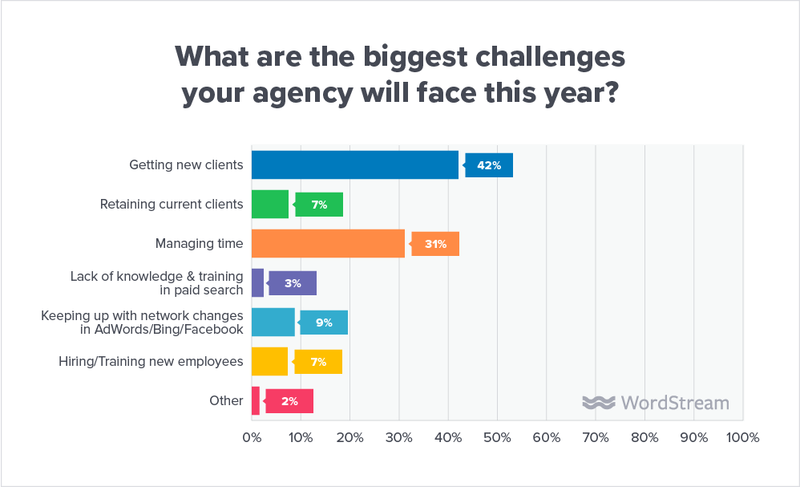
To directly address this challenge, when asked what the main source for acquiring new clients is, the most popular response was "client referrals":
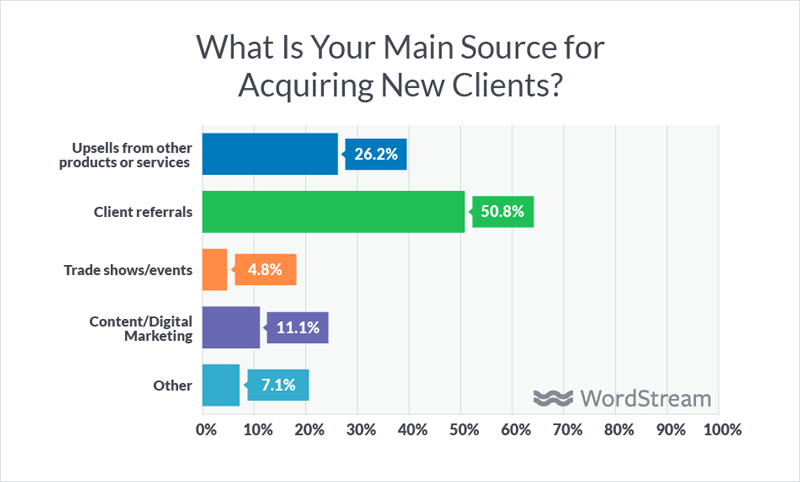
This circular loop is key to developing a robust new business pipeline. Keeping clients happy and delivering outstanding work encourages them to speak about you in the industry and with their peers which opens the door to new work in future.
For online lead generation, you can't go past our Embeddable Audit Tool. Simply add the code to your agency website and you'll be able to instantly offer your website visitors with a fully customizable instant website audit.
This is a powerful lead generation tool which can help you start the conversation with potential clients:
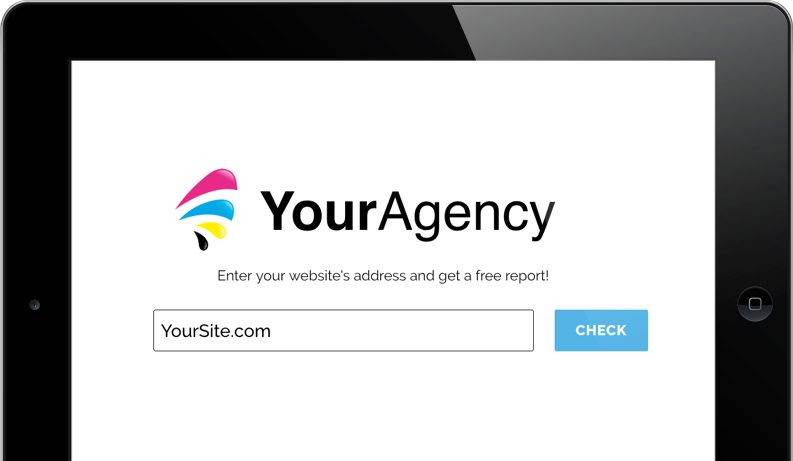
Managing a Digital Agency
As the agency grows, so too does the level of operational planning. Processes need to be implemented to manage the intricate workflow of multiple clients, multiple pieces of work and multiple resources.
Each week the management team typically plan the agency's capacity known as the capacity plan.
This is irrelevant for small agencies of 2 or 3 people but if your agency has, for example, 10 full-time employees who each work 40 hours per week, then the agency has 400 hours of weekly capacity that needs to be planned.
Each employee will have a percentage of time they can spend on client work (ie billable work) while the rest of their time will be spent on internal work (ie non-billable work) such as team meetings, brainstorming, new business development, team activities etc.
It will be your goal to ensure you get the balance right of allocating sufficient hours in the capacity planner to get the work done to a high quality whilst ensuring the project remains profitable for the agency by working backwards from the budget or monthly retainer and dividing by each allocated employees' hourly rate. This can be tricky!
For any billable hours business, its important to track capacity planned each week against actual hours spent. This requires all employees to maintain accurate timesheets detailing how much time they spent on each client and each project.
There are a number of digital timesheeting solutions but choosing one that's either part of or integrates with your payroll system is best for efficiency and reporting.
Timesheeting is so important but let's face it, employees don't enjoy doing it so some agencies have taken some harsh fun measures to ensure employees complete their timesheets each week.
Brazilian agency Casa has a fully-stocked fridge electronically locked to their timesheet system and only when everyone's timesheets are submitted does it unlock on Friday afternoon!
At the end of the week you can reconcile actual hours spent against the capacity plan. This reconciliation results in a productivity report which shows which of your staff are the most "productive" based on how much time they spent on billable hours.
Managing Agency Employees
Agency culture is certainly unique. While the stereotype of work hard, party hard millennials holds some truth in larger agencies; these days there's a lot more diversity and work-life balance.
In a services business driven by deadlines and performance, there are many opportunities for stress to build.
Because work is mostly of a creative nature, agencies attract extroverts and people with big egos. This pressurized environment can lead to a perfect storm of negative internal culture.
This manifests in the high churn rate of agency employees. In exit interviews staff typically mention the lack of balance, friction with colleagues or the feeling of stagnation as the main reasons for leaving.
Rachelle Denton, Co-Founder of The Storm Collective recounts her time working in agencies:
"It was incredibly demanding in terms of the amount of hours. It wasn’t unusual to have people break down because of work. I had friends who are doctors, and they all kept saying that the way I work was a bit crazy."
Its management's job to maintain a health agency culture where employees enjoy coming to work and feel valued.
Several strategies agencies use to maintain or promote healthy work-life balance include:
- Team lunches
- Meeting-free mornings
- Retreats and social events
- Friday drinks
- Winter Mondays (late starts on Monday during Winter)
- 9-day fortnights
- Remote / flexible working or,
- Community service initiatives where staff leave the office for a day and work for their favorite charity or non-profit.
Building a sense of camaraderie and shared progress towards the agency's mission also contributes to a positive culture.

#officegoals - TBWA\Chiat\Day's Los Angeles office
Despite all this, sometimes there's little you can do about high staff churn.
With agency staff in high demand, skills shortages and agencies perpetually recruiting - this has reduced the available talent pool in many cities resulting in increased head-hunting which in turn fuels higher churn.
The Media Federation of Australia says the churn rate in Australian media agencies is rapidly approaching the 35% mark annually which is huge.
In fact, some agencies have lowered the bar of long service leave from 10 years to just 5 years, which is testament to the high churn rate issues in this industry.
Paul Gumbinner, President of Gumbinner Co recommends agencies implement staff retention programs to incentivize employees to stay.
Recognition is essential too. Gumbinner says even a simple all-staff email can make all the difference in making people feel appreciated.
Attracting talent can be as difficult as retaining them. While some agencies work with recruiters, many go it alone and place job openings on LinkedIn and industry job boards.
Headhunting talent is another option and with new functionality in LinkedIn's Talent Solutions product, its easier to narrow down a potential list of candidates with the ability to filter people who are explicitly "open to job offers".
But at the end of the day Stephen Beck, Founder of EngineDigital says "Great talent requires meaningful work. The best agencies recognize that their people are their greatest asset, and keeping their team engaged through meaningful work remains a top priority.
Those agencies with a defined vision and set of principles focus on finding the right purpose-driven clients and projects that keep the agency team challenged and fulfilled".
Taking the Plunge
With all this in mind, it can be a bit daunting if you're at square one about to embark on your new venture.
Spare a thought for Mario Falchoni, founder of Retorix who launched his agency in April 2020 during the Coronavirus pandemic.
"Like everyone else, we watched the events of March unfold with growing unease.Crashing stock markets, exhaustion of monetary policy, ever-tightening social restrictions and rising global mortality.
The upshot of our deliberations? Ships are built to cross the oceans, not to sit safely in harbours. In the same way, strategists, communicators and brand builders thrive in a crisis.So, girding our loins and bound by our logic, we launched Retorix. It was also born into a recession".
Tin Rovic writes about building agencies from scratch outlined 7 points for agency owners that are just starting out:
https://twitter.com/tinrovic/status/1259090743433494529
The barriers to entry for starting an agency have been lowering as the digital industry has become increasingly fragmented.
In fact, one could say there's never been a better time to start a digital agency as more clients move their marketing activity and budgets to digital.
Start with SEOptimer's Digital Agency Lean Canvas and map out your target clients, your focus and how you'll generate leads.
While this model won't be set in stone it will give you a starting point. Register a domain, get a website live and start getting in front of potential clients. Don't forget you can also download this guide as a PDF too!
